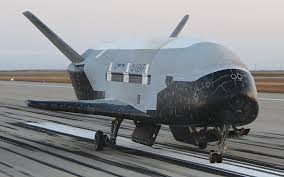The X-37B space plane has captivated, fascinated, and intrigued scientific progress for centuries. Built and produced by Boeing and flown by the United States Space Force, this unmanned orbital test vehicle, reusable in design, has been a game changer in space technology. While the true mission has remained classified, the public release of a recent orbit photograph by the X-37B is an extraordinary example of open disclosure.
A View from Orbit
The X-37B posted an orbital image for the first time in history. The shot, which was taken on its seventh mission that was launched late in 2023, gave a high-altitude view of Earth placed above Africa. The event gave people a peek into a possible program that existed below the radar for most of its life.
Now in a “highly elliptical orbit,” the X-37B Space Plane is pushing testily the frontiers of new space domain capabilities, including new maneuvers enabling it to position itself with minimal fuel. These steps reflect increasing strategic worth from the capacity to project a firm and adaptable space presence, as threats to military satellites proliferate.
Also read : Celsius Stock Jumps After Alani Nu Acquisition & Earnings
The Evolution of the X-37B
The history of the X-37 is traced back to 1999 when NASA contracted Boeing to design a reusable spacecraft for launching tests into orbit. Originally, it was intended to be launched using the space shuttle’s cargo bay. The program was completely reconfigured after the 2003 Space Shuttle Columbia disaster. It later developed an even more autonomous rocket-based concept that eventually gave birth to the X-37B.
The project was then shifted to the Defense Advanced Research Projects Agency (DARPA) in 2004 and classified because of its use in the military. It was then managed by the Air Force, whose team enhanced the design to maximize performance. In the year 2006, the X-37B became a re-entry space vehicle whose speeds increased to nearly 17,500 mph in space for as long as 270 days.
Experimental Missions and Capabilities
Since its initial flight in 2010, the X-37B Space Plane has conducted a succession of progressively tougher missions. It is flying primarily to experiment with new materials in space environments, releasing experimental payloads, and honing orbital maneuvering proficiency.
The capability of the spacecraft to conduct secret experiments has generated a lot of speculation about what its actual mission is. It has been speculated that it is a weapons platform and speculated that it would be for reconnaissance and satellite maintenance by others. One of the most interesting missions in 2020 was the deployment of the FalconSat-8, a tiny Air Force Academy satellite that carried several experimental payloads. The X-37B was in orbit for a record 908 days before returning to Earth.
Launched on SpaceX’s Falcon Heavy
The seventh and newest mission of the X-37B took off in December of 2023 aboard a SpaceX Falcon Heavy rocket. It was the most successful to date in breaking a record because it was the highest-flying mission ever for a space plane. The Falcon Heavy, with its unbelievable lifting capabilities, was what was able to take the X-37B to heights higher than any previous mission.
Aerobraking is one of the main goals of this mission to master. The method employs atmospheric drag to slow down effectively and return the spacecraft from one orbit to another using little fuel. This will be essential in future scientific and military missions, like keeping satellites in orbit and for potential counter-satellite missions.
The X-37B vs. China’s Shenlong
While the U.S. has not yet worked on its own spaceplane technology, China has already been pursuing its own equivalent, the Shenlong. As mythical as the dragon god it’s named after, the Shenlong program has been wrapped in secrecy since it was first floated in 2007.
Similar to the X-37B Space Plane, the Shenlong is said to be capable of autonomous flight, the ability to perform rapid maneuverability, and the ability to carry out experimental payloads. Not very much information has been made public regarding its overall capability, although rumor has it that it was able to successfully recover and deploy small satellites, which possibly could be a priceless asset in future space warfare.
China’s latest Shenlong mission launched in 2023 for nine months involved sending an object into space. Such facts confirm that the race to attain orbital supremacy has already started, with the U.S. and China competing to acquire the latest spaceplane technologies.
Also read : Trump’s USPS Control Plan: Postal Service at a Crossroads
A Future of Space-Based Strategy
X-37B long-duration flights bear out the expanding role of space in international military strategy. The missions themselves remain classified, although tests of novel space systems, training orbital flight procedures, and helping to facilitate satellite operations have been documented goals.








